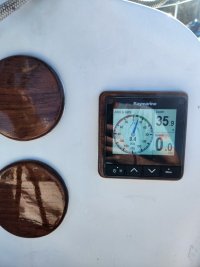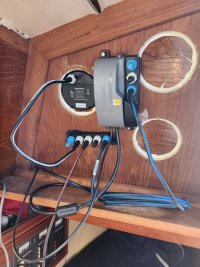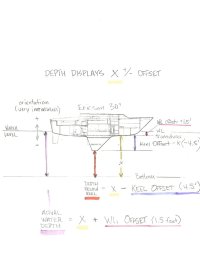light24bulbs
E30+ 1984, San Juan Island, Wa
I estimated 3 feet but I haven't got a clue and I didn't measure last haul out. I assume it's good to get this one right.
Existing transducer hole was reused, the more vertical one in the middle of the boat. The angled one that had the speed transducer I simply plugged since my new airmar 800 is combined speed+depth.
Attached is my new raymarine i70s kit install. $1000 of parts and $600 labor for the new transducers, plus me doing all the wiring.
A lot of work to see those little numbers but hopefully it's worth it.
Existing transducer hole was reused, the more vertical one in the middle of the boat. The angled one that had the speed transducer I simply plugged since my new airmar 800 is combined speed+depth.
Attached is my new raymarine i70s kit install. $1000 of parts and $600 labor for the new transducers, plus me doing all the wiring.
A lot of work to see those little numbers but hopefully it's worth it.



